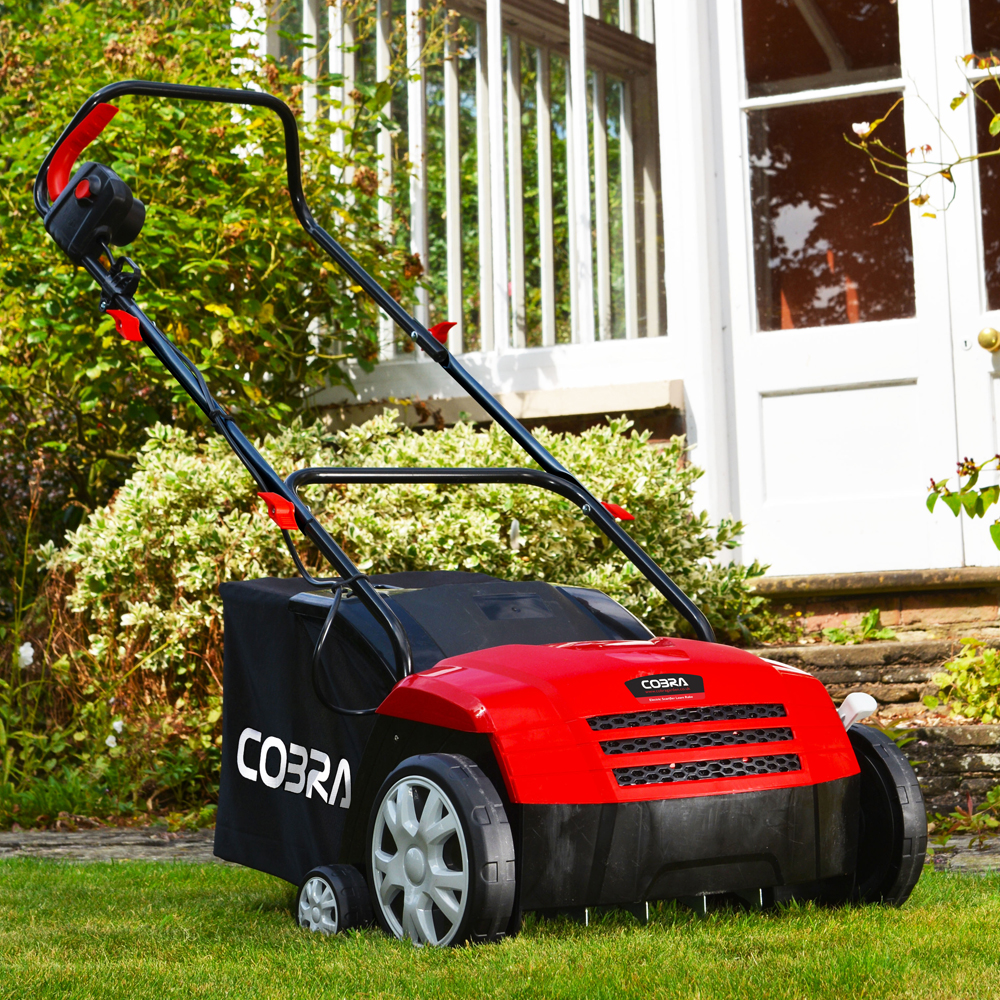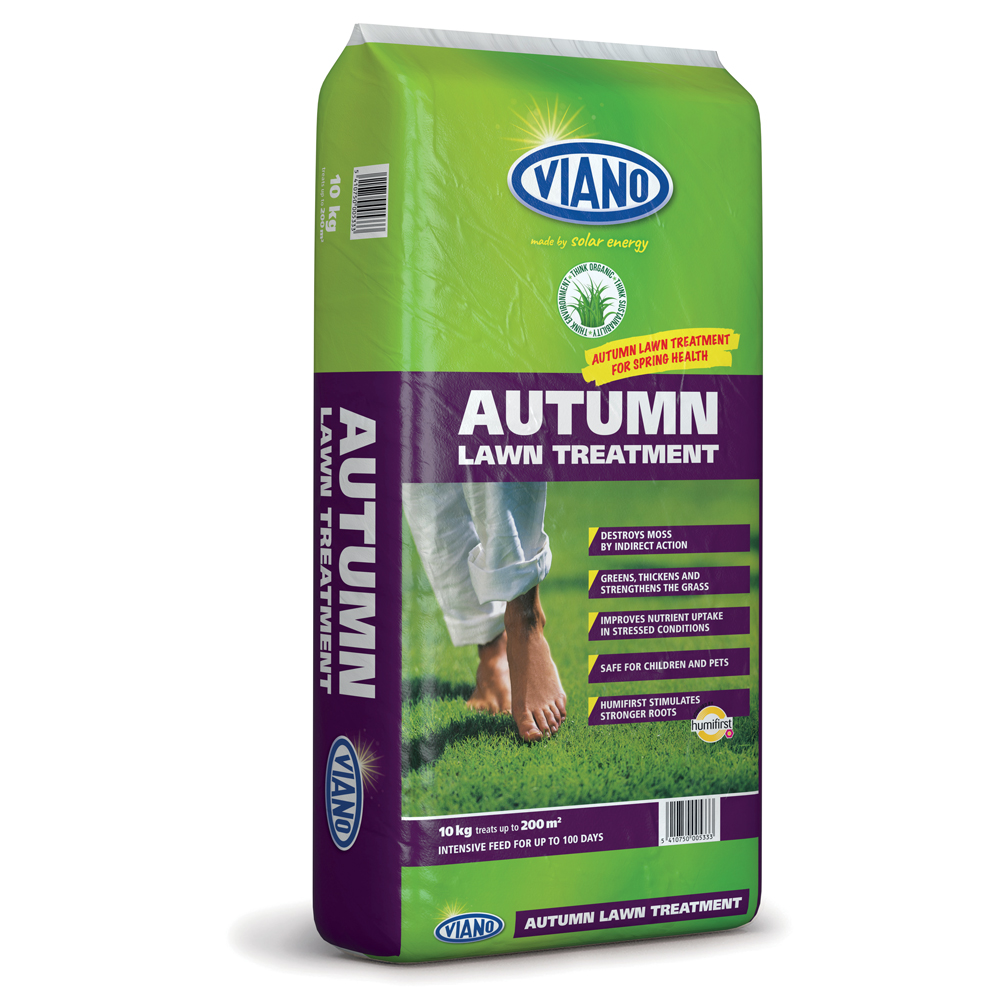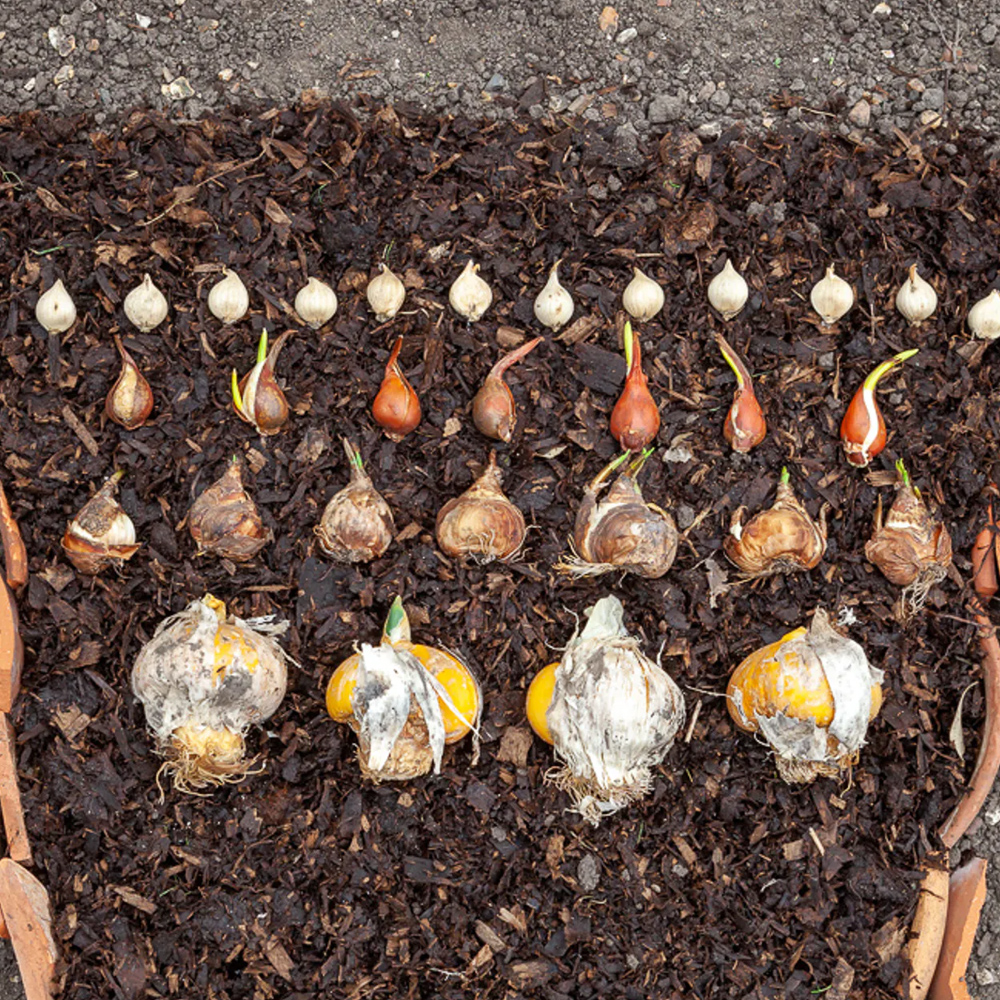November Easy-Gardening Tips
It is the month when our thoughts turn to big bonfires, hearty comfort food and rummaging for the long scarves and warm gloves that we put away but can’t quite remember ‘where’ now that the cold has come to bite us again. Despite the coming of the wild weather of winter, however, there’s still time to prepare the lawn for months of meagre nutrients, and do some groundwork for grass that will be glorious next year – even mowing it if you follow a few simple rules. It’s also a time to get creative with some interesting pot-planting with bulbs, as well as continuing to do the more mundane but often satisfying jobs of clearing leaves, pruning fruit trees and preparing the garden for a damage-free winter. And in all, November is still an opportunity to get outside in the garden so here’s to making the most of it before the madness of Christmas is upon us!
WRAP UP WARM AND AERATE YOUR LAWN 
It may not be the most obvious job for an often chilly November day but it is time to wrap up warm and aerate the lawn! Soil aeration is often nothing short of crucial in maintaining a healthy lawn as it helps to supply oxygen to the roots of your grass and counteracts the damaging effects of soil compaction that prevents nutrients and moisture from penetrating down to the roots and stunts growth. Combined with the onset of dreaded autumn moss that thrives on the season’s wetter conditions, and your lawn could be facing a very lean time over the coming months. Happily though, the solution is relatively simple. You could, for example, buy one of our hand-use lawn aerators from as little as £35.99 or choose a premium electric machine such as the Cobra SA32E 2-in-1 Electric Scarifier & Aerator which at under £100, has two interchangeable cylinders to provide the ultimate pampering treatments for you lawn, and comes with a two year manufacturer’s guarantee. And if you have a really small patch of grass then just use a garden fork, using the tongs to punch holes around 10cm apart, leaning slightly backwards as you work so that the holes are widened and let a little more air in.
 While you are preparing the grass for winter, it’s a good time to lightly rake up the leaves and you can also re-edge the lawn if you are going for a ‘neater’ look. Equally, why not give the grass a generous feed before aerating which will keep the grass fighting fit against the frosts, ideally using a good organic fertiliser suited to seasonal needs such as our Viano Organic Autumn Lawn Treatment.
While you are preparing the grass for winter, it’s a good time to lightly rake up the leaves and you can also re-edge the lawn if you are going for a ‘neater’ look. Equally, why not give the grass a generous feed before aerating which will keep the grass fighting fit against the frosts, ideally using a good organic fertiliser suited to seasonal needs such as our Viano Organic Autumn Lawn Treatment.
Fertilising before aeration will ensure that the nutrients in it can penetrate even more deeply into the roots and increase intensity of feeding.
Remember, looking after your lawn at this time of year will pay dividends next summer when you can expect it to return the favour with lush and healthy grass as a thank you.
TO MOW OR NOT TO MOW?
That is the question in the winter months as the grass will still grow above five degrees centigrade, albeit more slowly. The simple answer is ‘yes’ but there are just a few common-sense rules to follow. Probably the most important is not to mow when the ground is too soggy as the soil can become compacted, and you will end up needing to aerate again as we’ve discussed above! It’s best to wait until the weather has been rain-free for at least a couple of days. The second rule of thumb is to lift your mower blades to the highest setting and never cut more than a third of the grass length in one go. Finally and rather obviously, avoid mowing in frosty weather and it is actually best not to even walk on your lawn when it is covered in frost as the water in the grass cells is frozen and our weight puts too much pressure on them, leaving brown footprints when the weather warms up again.
 GET BUSY WITH BULB LASAGNE
GET BUSY WITH BULB LASAGNE
A favourite of Monty Don, a ‘bulb lasagne’ is an intriguing term that describes a layering of bulbs in a generous-sized pot that you can plant in November to produce a fabulous ever-changing display of flowers next spring.
If you are new to the idea, why not start with a two-layer lasagne and plant, for example, crocus bulbs on top and tulips underneath. For the more adventurous gardener, we would recommend adding a layer of daffodils in the middle, but you can be creative using snowdrops, crocuses or any other spring bulbs you choose. The first layer at the bottom should always be the biggest variety that will be the last to flower and should be covered with peat-free compost before working upwards to the smallest of your bulbs at the top. Incredibly, even if you plant the bulbs on top of each other, they will simply grow around the one above in a way that reminds us that nature is indeed marvellous! After planting together, your ‘sleeping beauties’ will produce a fairy tale of spring flowers with constant colour from February to May.
If you want to know more, take a look at the lovely Sarah Raven on you tube who talks through the easy steps and clearly demonstrates her enthusiasm for the bulb lasagne genre!
Our quote for the month is from the poet Henry David Thoreau and is an unusual one but, in many ways, it sums up November perfectly. “This is the month of nuts and nutty thoughts - that November whose name sounds so bleak and cheerless - perhaps its harvest of thought is worth more than all the other crops of the year.” For the gardener, November feels like a reflective month and one suited to mulling over the year that has been, the gardening successes and failures that arrived in equal measure and thinking ahead to the coming year – from planning planting schemes to trying your hand at wilding for the first time. Indeed, there may be time to consider it all while tackling the jobs in the garden this month. Here’s to our fruitful November thoughts!
TOP 10 TIPS FOR NOVEMBER
![]()
It’s such a shame when our favourite decorative pots show the tell-tale signs of frost damage come spring, with cracks and chips that weaken the structure. Although it can seem a little bothersome, it is well worth wrapping them up against the cold with a length of hessian, or why not put that hard to recycle bubble wrap to good use by covering the sides of containers with it and roughly tying with string.
![]()
Pots and containers can also be raised above the ground to stop them getting waterlogged using any old bricks you have lying around, or even some logs from the woodshed
![]()
If you haven’t already pruned your roses, then roughly shorten the branches to about a third of their height to stop them swaying too much in the wind and causing the roots to become unstable
![]() Before winter really takes hold, aerate your lawn to let the oxygen in and help it retain moisture during the winter
Before winter really takes hold, aerate your lawn to let the oxygen in and help it retain moisture during the winter
![]()
It’s a good idea to clean out water butts which may have become stagnant during summer as there will be a fresh and plentiful supply of rainwater over the coming months
![]()
It is your last chance to lift any remaining dahlia tubers from the soil, before shaking them off and then storing in a cool, dry place such as the shed, particularly if you live in a rural or low-lying frost-pocket
![]()
If you have any plants that are not wholly hardy as they originate from sunnier climates, such as agapthanus from Southern Africa, consider covering them with compost or straw to keep them warm over winter
![]()
Think of the birds that populate your garden and invest in some feeders as their natural supply of food diminishes
![]()
It is is a great month to plant tulip bulbs or why not go a step further and create your own bulb lasagne following our simple guide
![]()
Before the mad rush of Christmas, why not use November as a reflective time to consider what you have achieved in the garden this year, things that have worked well versus those that were challenging and how these can inform your exciting projects the coming 12 months

Dizzy checks the squirrels have harvested their nuts for winter as food for our garden friends becomes scarce

</p
